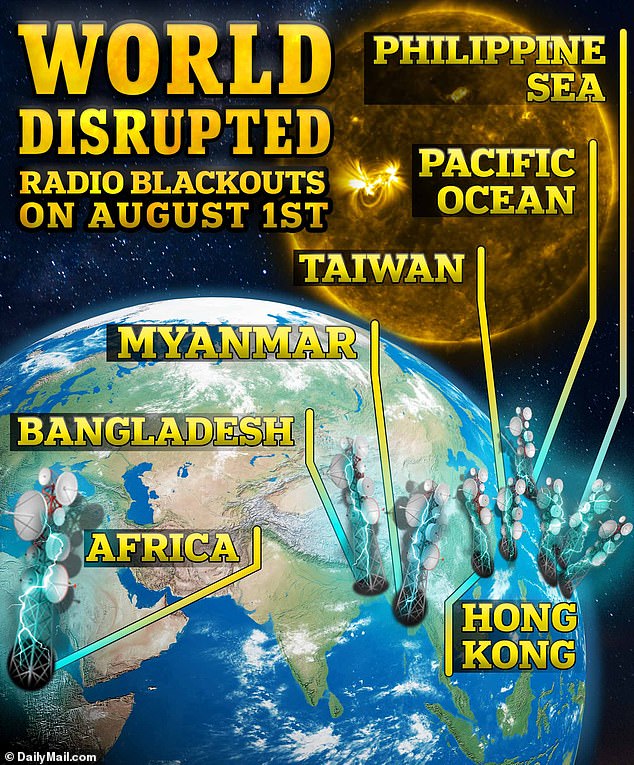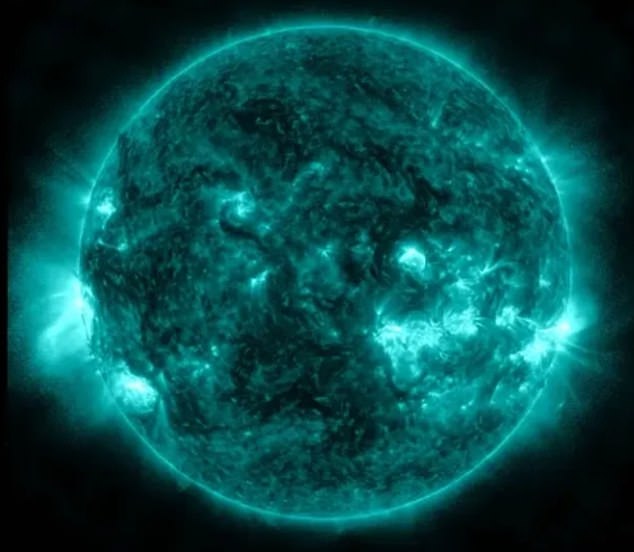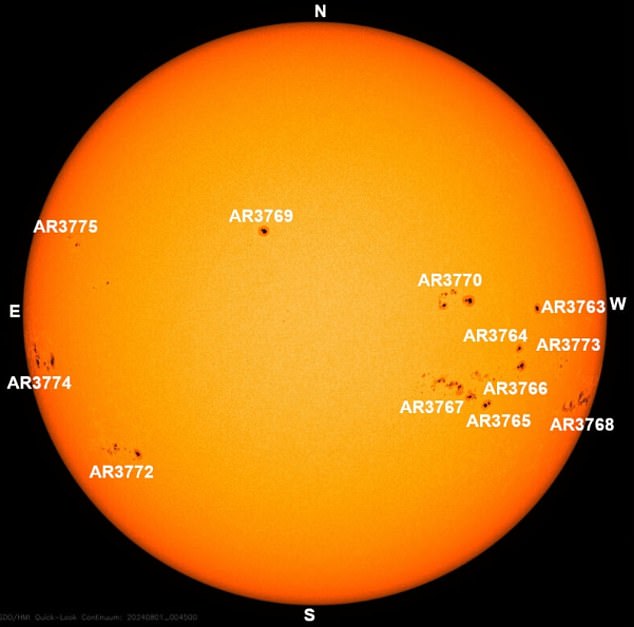Radio blackouts were reported around the world on Thursday, caused by a “tsunami” of solar flares, with scientists saying more blackouts are on the way.
The sun has spewed out at least 15 plasma streams, or coronal mass ejections (CMEs), over the past 24 hours, causing communications outages across parts of Africa and Asia when they hit Earth.
The National Oceanic and Atmospheric Administration (NOAA) trackers show the disturbances moving toward the US.
This type of solar activity can cause problems with satellite communications in space, aviation and at sea and can disrupt GPS.

Parts of Africa and Asia are experiencing disruptions and the National Oceanic Atmospheric Administration (NOAA) tracker shows the storm’s ‘noise’ moving west towards the US
NOAA also indicated that radio outages are likely to continue until at least August 4, likely affecting radios, aviation and marine communications, and satellite operations.
The storms are predicted to bring auroras to many northern states, including New York.
The sun has been very active this past week, with 12 active sunspots visible: cooler areas on the sun’s surface caused by huge changes in our star’s magnetic field that are pointed toward Earth.
Space weather experts are calling the recent activity a “tsunami of solar storms.”
Sunspots are often larger than planets and appear dark on the Sun’s surface because they are cooler than other parts of the Sun (although they are still very hot, around 3,000°C).
The magnetic field lines near sunspots often get confused, cross each other and reorganize. This can cause an explosion of energy called a solar flare.
Active region AR3774 was the main producer of flares with nine streams of activated particles since Wednesday.
According to NOAA, another plasma stream will hit Earth, likely causing a geomagnetic storm, a major disturbance in Earth’s magnetosphere that affects satellite orbits and causes radio blackouts.
“Solar activity was elevated throughout the weekend and several events, including solar flares and filament eruptions, were associated with CMEs,” NOAA reported on its website.


The Sun has spewed out at least 15 plasma streams, or coronal mass ejections (CMEs), over the past 24 hours that have impacted Earth


The Sun has been experiencing a high level of activity over the past week, as there are 12 active sunspots, cooler areas on the Sun’s surface caused by massive changes in our star’s magnetic field, which are pointed toward Earth.
‘Some of these CMEs were found to have components that were Earth-facing components.
‘R1-R2 (small – moderate) solar flares are still expected over the weekend (1 – 4 August). There is also a continued chance of an R3 (strong) event.’
The R scale refers to ‘Radio Blackouts’, with ‘1’ being ‘minor’ and generally indicating weak or minor degradation of HF radio communications on the sunny side, with occasional loss of radio contact.
And ‘2’ means a limited outage of HF radio communications on the sunny side, and loss of radio contact for tens of minutes.
According to NOAA, the countries affected by unrest on Thursday are R-2.
These regions included Taiwan, Hong Kong, Myanmar, Bangladesh and West Africa.
According to NOAA, in the next 24 hours there will be 75 percent of M-class bursts that generally cause short radio blackouts affecting Earth’s polar regions, and there is a 25 percent chance of X-bursts causing radio blackouts worldwide.
But solar activity also has a positive side: it can produce beautiful northern lights in a number of American states, including Montana, Minnesota and North Dakota.
In late July, NASA captured a dark plasma burst on the Sun.



